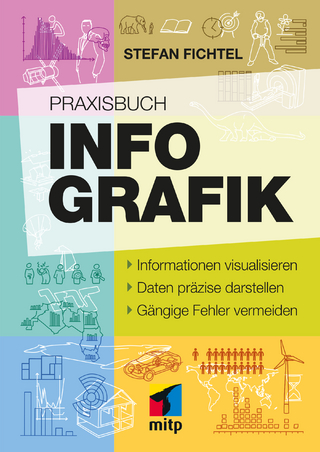
People and Computers VII
Cambridge University Press (Verlag)
978-0-521-44591-7 (ISBN)
- Titel ist leider vergriffen;
keine Neuauflage - Artikel merken
Human Computer Interaction (HCI) is concerned with every aspect of the relationship between computers and people (individuals, groups and society). The annual meeting the British Computer Society's HCI group is recognised as one of the main venues for discussing recent trends and issues. This volume contains refereed papers and reports at the 1992 meeting. A broad range of HCI related topics are covered, including graphics, hypertext, multimedia, cognitive models, design, adaptive and cooperative systems, and evaluation methods. A section on laboratory overviews describes the interaction of research and development. Both research and commercial perspectives are considered, making the book essential for all researchers, designers and manufacturers who need to keep abreast of developments in HCI.
1. The ecology of work and interface design; 2. Molecular graphics: from pen plotter to virtual reality; 3. User interface architectures for an information age; 4. The use of unfamiliar programming languages by experienced programmers; 5. Modelling the relationship between planning, control, perception and execution behaviours in interactive worksystems; 6. The effects of skill development and feedback on action slips; 7. What is gained and lost when using evaluation methods other than empirical testing; 8. EVADIS II: A new methods to evaluate user interfaces; 9. From user's problems to design errors: linking evaluation to improving design practice; 10. Inferring graphical constraints with Rockit; 11. On the use of LOTOS to describe graphical interaction; 12. Effective graphics: accessing spatial relations; 13. Pace and interaction; 14. Systematic menu design; 15. User modelling and user interface design; 16. Hypertext document retrieval and assembly in legal domains; 17. Does a video diary help recall?; 18. An ethnographic approach to analysing navigation and task structure in interactive multimedia: some design issues for group use; 19. A structured design of word processing functionality; 20. Design principles for improving service integration for end-users in broadband communication systems; 21. CICS/ESA usability: a measure of success; 22. Sociologists can be surprisingly useful in interactive systems design; 23. CoOpLab: practical experiences with evaluating a multi-user system; 24. ShareME – shared multimedia environments: some issues on interaction in distributed multimedia information environments; 25. A taxonomy of adaptive user interfaces; 26. The re-use and integration of existing software: a central role for the intelligent user interface; 27. Analysis of user behaviour as time series; 28. An assessment of font preferences for screen-based text display; 29. Using animated demonstrations to teach graphics skills; 30 HCI, where's the practice?; 31. CSCW: Power, control, conflict; 32. Interface construction for the millennium: beyond objects and widget pushers; 33. Human factors and flight deck automation; 34. HCI: the search for solutions; 35. The Human-Computer Interaction group at the University of York; 36. Some research at the Glasgow Interactive Systems centre; 37. The state-of-the-art at the Research Institute for Theoretical Informatics; 38. Human-Computer Interaction engineering: a laboratory overview of the Ergonomics Unit, University College London; 39. Rank Xerox Cambridge EuroPARC; 40. Human interface design: laboratory overview; 41. Logica Cambridge Ltd – laboratory overview; 42. The LUTCHI Research centre.
| Erscheint lt. Verlag | 22.10.1992 |
|---|---|
| Reihe/Serie | British Computer Society Conference Series |
| Zusatzinfo | 1 Halftones, unspecified |
| Verlagsort | Cambridge |
| Sprache | englisch |
| Maße | 172 x 247 mm |
| Gewicht | 959 g |
| Themenwelt | Informatik ► Software Entwicklung ► User Interfaces (HCI) |
| Mathematik / Informatik ► Informatik ► Theorie / Studium | |
| ISBN-10 | 0-521-44591-4 / 0521445914 |
| ISBN-13 | 978-0-521-44591-7 / 9780521445917 |
| Zustand | Neuware |
| Haben Sie eine Frage zum Produkt? |
aus dem Bereich


